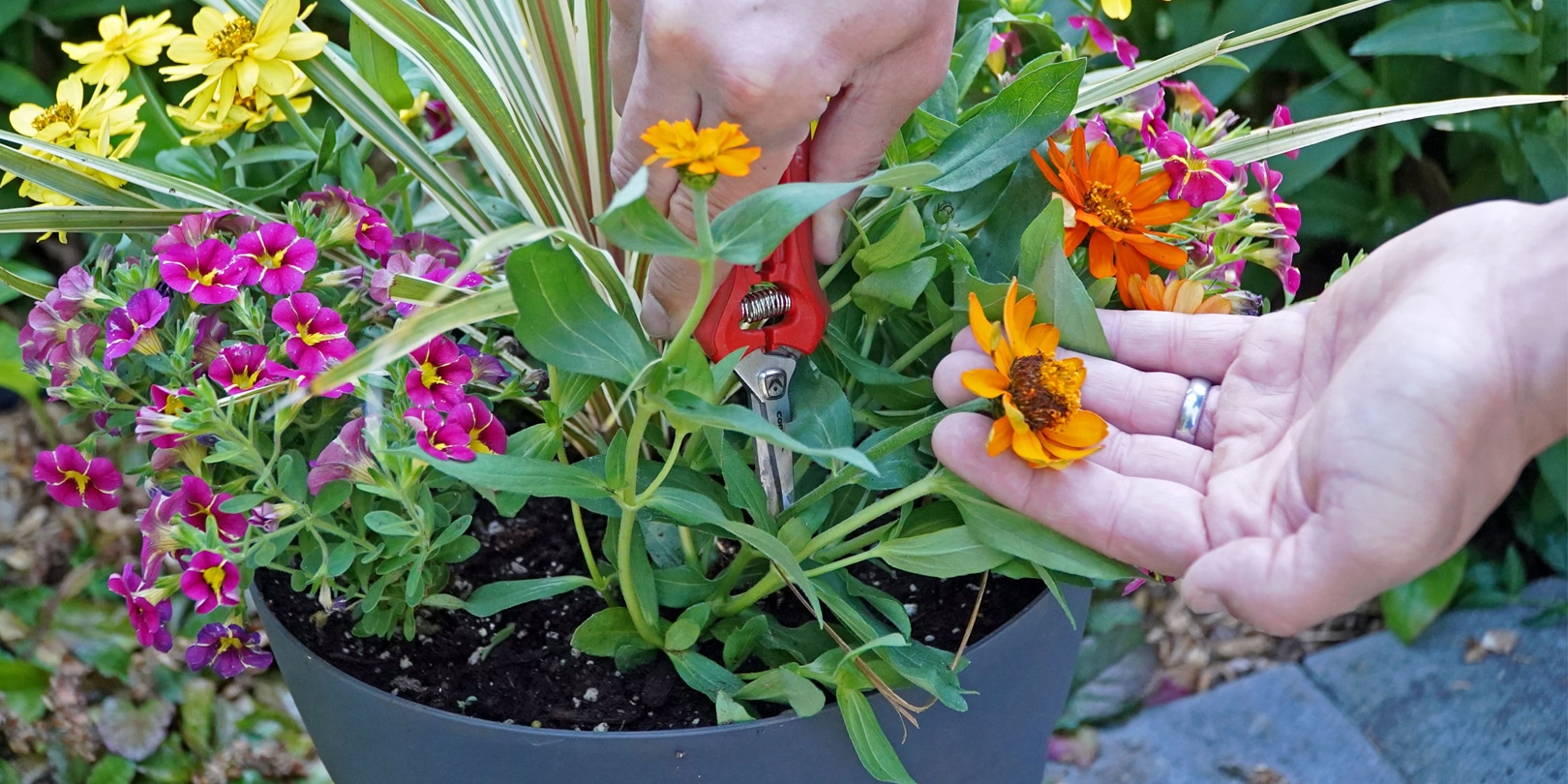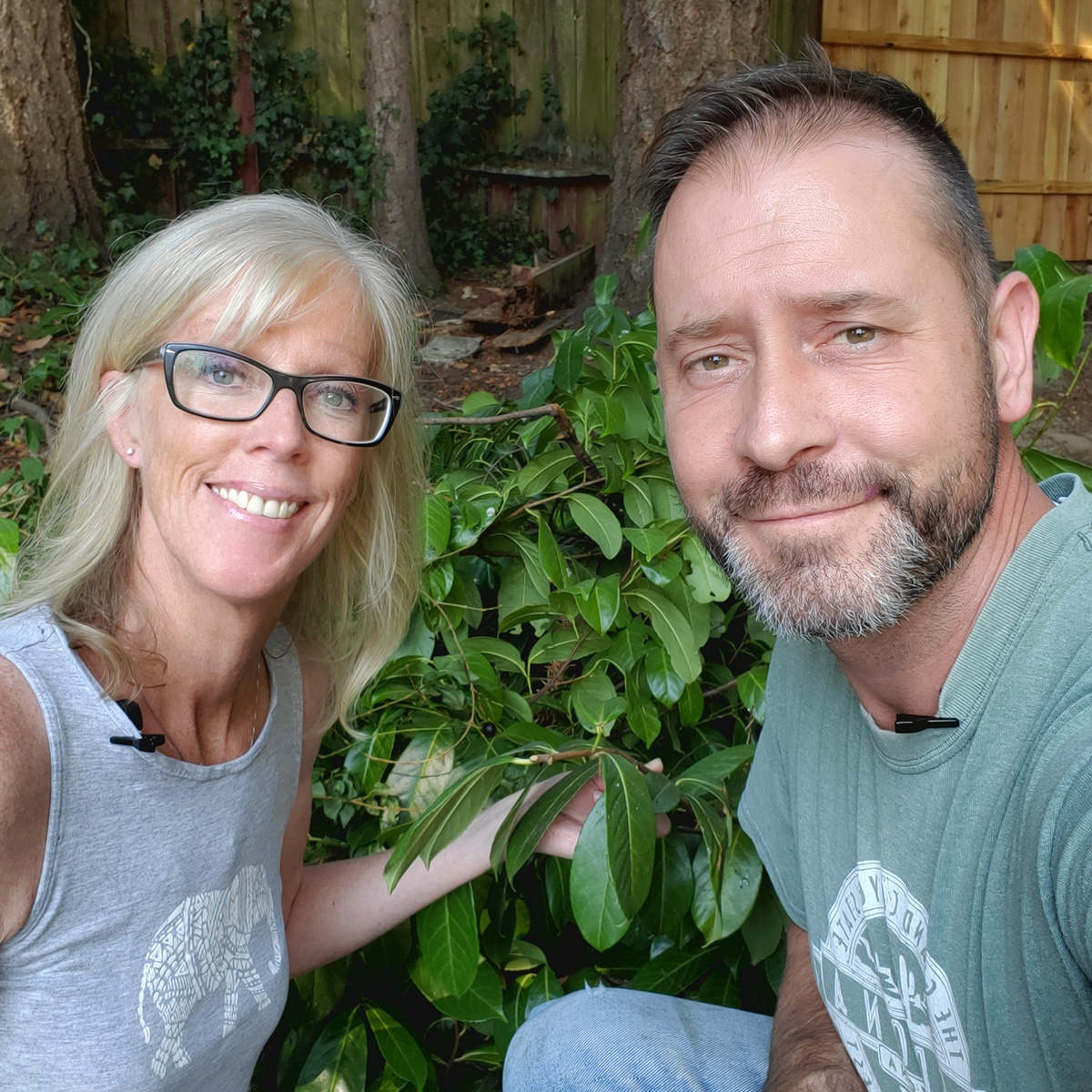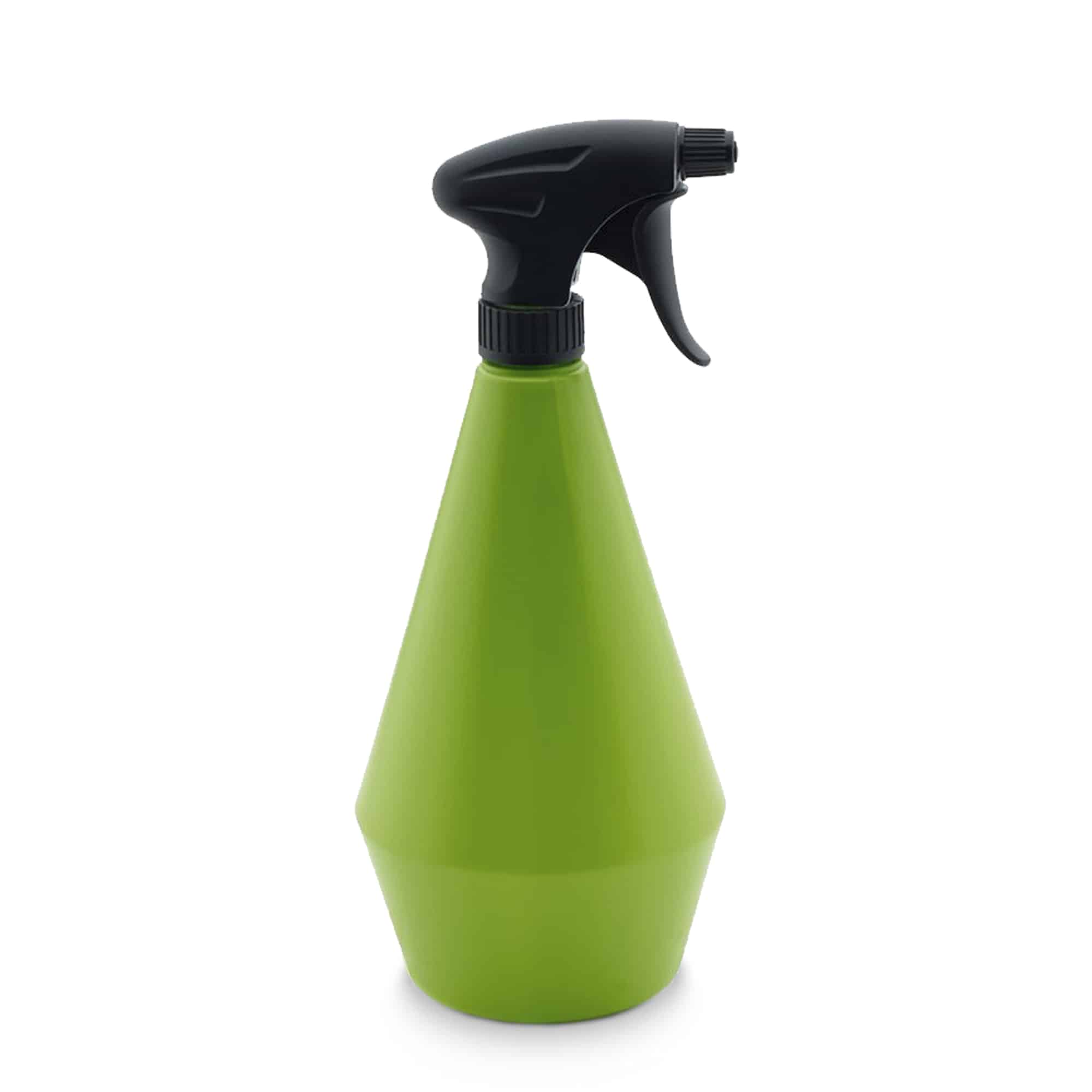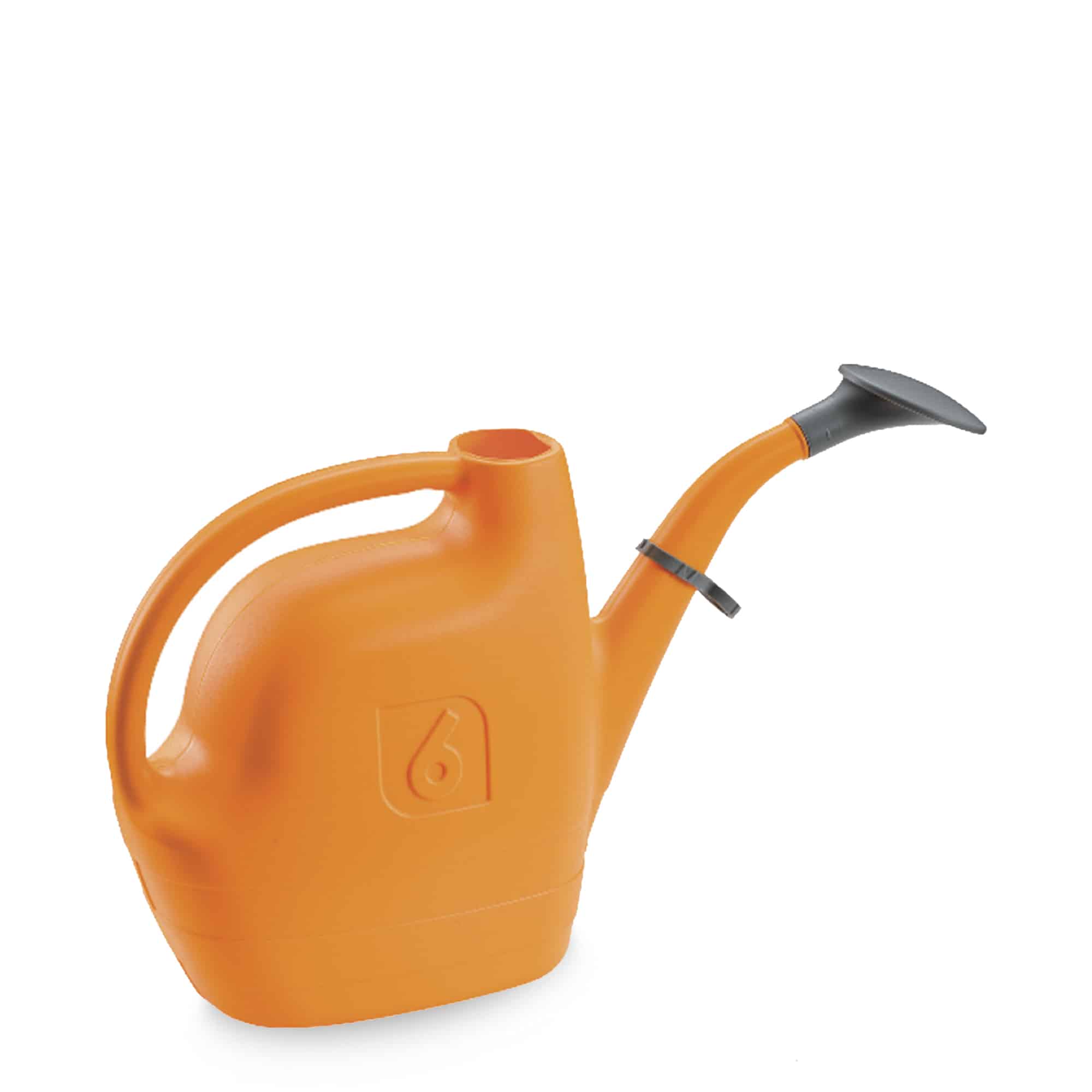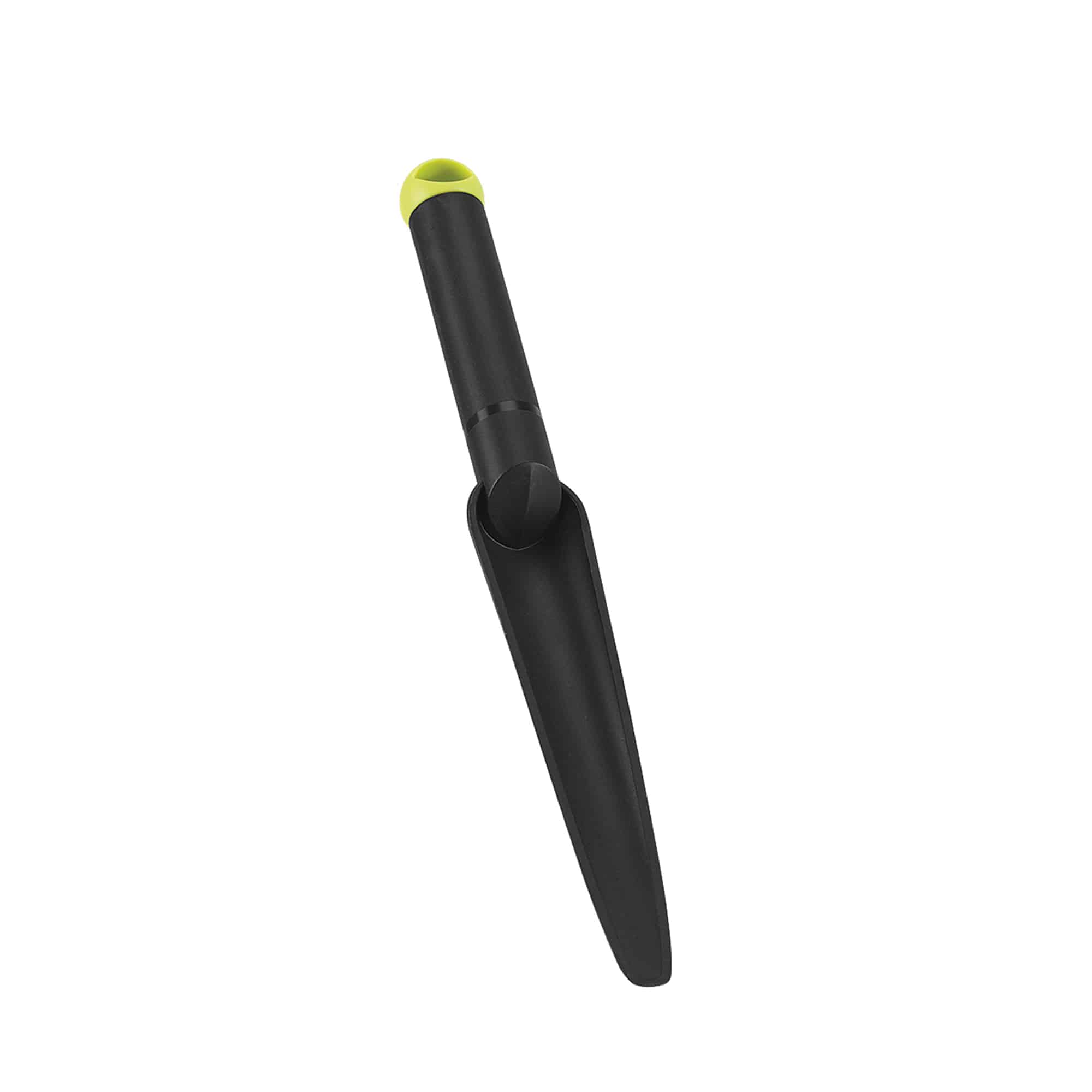Summer flowering containers add interest, color, texture, depth and a unique sense of personality to your outdoor spaces. With so many options available during the summer months, filling up your containers with all the beautiful, colorful plants and flowers you want is an easy task. In order to keep your plants and flowers looking beautiful all season long, however, they will require basic care and proper maintenance to maintain their health so they thrive through the heat of summer.
Luckily, there are various tools and supplies available to assist you in keeping your summer containers as happy as possible so they can live their best life.
Summer Container Plant Care
Just like the rest of your garden, containers require ongoing supervision and need to be maintained, especially in the summer. Since your flowering containers are basically their own small microenvironments, they have a finite amount of growing space and rely on you to fulfill most of their water and nutrient needs. And, when the temperature heats up in the summer months, a container can quickly become decimated by either too little or too much water, depending on the plants’ needs.
Therefore, good container gardening care consists of monitoring these spaces for their basic needs: water, air and nutrients. Good care also includes keeping these mini growing spaces free of weeds (yes, they can get weeds, too), cleaned up, free of pests and diseases and fertilized for proper nutrition.
There are five important summer container care tasks that you’ll need to perform on a regular basis to ensure happy plants and flowers. From the tools and supplies necessary to get the job done to the steps of how to perform each task, you will learn basic container garden care so you can enjoy your plants all summer long.
Let’s get started!
1) Prune or Thin Out for Overcrowding
Often, your container plants need to be thinned out or pruned in order to allow for better airflow, maintain consistent sunlight levels, and help them keep their shape or form. This process may also help to prevent pests, disease, or types of damage to your plants as they continue to grow and mature.
Using a good pair of hand pruners, inspect each container and evaluate how each plant is shaped or how it’s growing as compared to the surrounding plants. If a particular plant is growing into another plant, such as the begonia pictured in this Rim TruDrop self-watering container, this is a good indicator that you should prune the plants so they are still touching but maintain that full look. If plants are growing over each other, and this is not how you intend for them to grow, they need to be pruned back so they are not shading and competing with other plants for sunlight or container space.
Keep in mind each plant’s individual shape and how you want it to look in the container. Once you have this in mind, go ahead and prune away any crowding or overgrown stems and branches. Just be careful not to prune too much. A good rule of thumb is to never remove more than a third of any plant’s total leaf or stem mass.
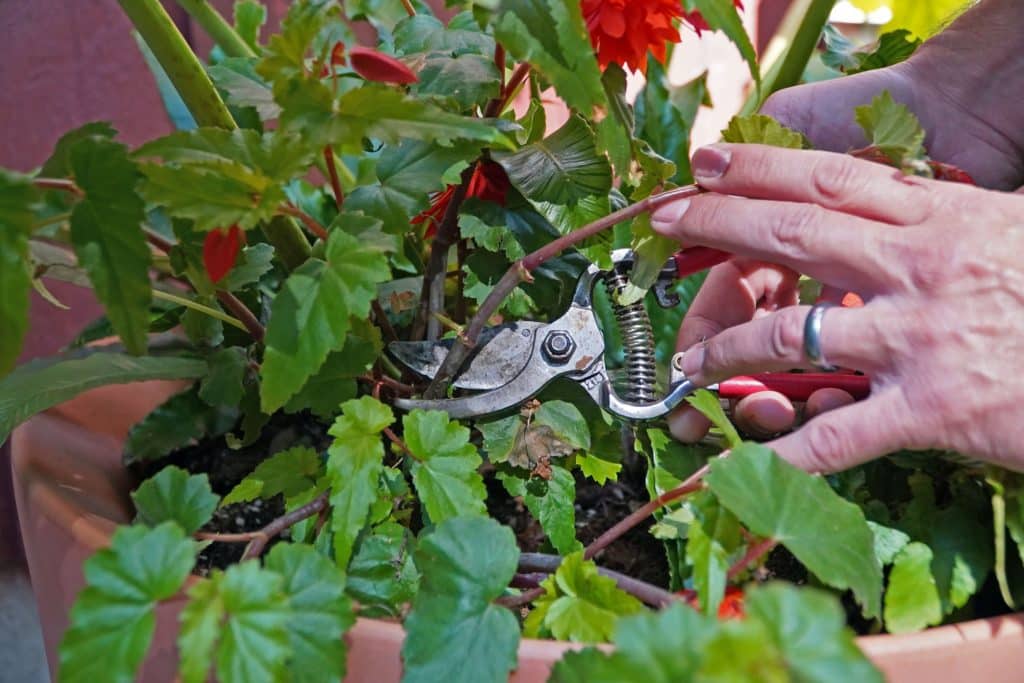
Using hand pruners to keep the Begonia growing into another plant
2) Deadhead Spent Flowers
Deadheading, or the removal of spent blooms, is a necessary part of flower gardening. This task differs from pruning in that the goal is to remove old, spent flower blooms in order to encourage reblooming. Plus, removing spent blooms keeps the plant clear of dead or rotting plant debris thus decreasing the opportunity for diseases and/or pests to infest your plants.
To deadhead your plants, gather your pruning micro-snips or hand shears, a large receptacle like a large Gabrielle bag for your debris (pictured in Lime), and some gloves if you have any allergies to plant sap or parts. First, identify the type of flower you need to snip. In general, most plants have flowers growing on single stems that can be either really long or short stems like the orange zinnia in this 12-inch Ella Round container (pictured in the Dark Grey Slate color). Other smaller flowers can be clustered together with multiple flowers on a single stem. Whatever way in which your flowers are attached to the plant, you can cut that spent flower by following the stem down to its point of attachment (or back to the next flower stem with a current open flower) and make your cut there. This way you can maximize flowering for each plant to flower longer through the summer and to keep them clean to avoid encouraging pests or diseases.
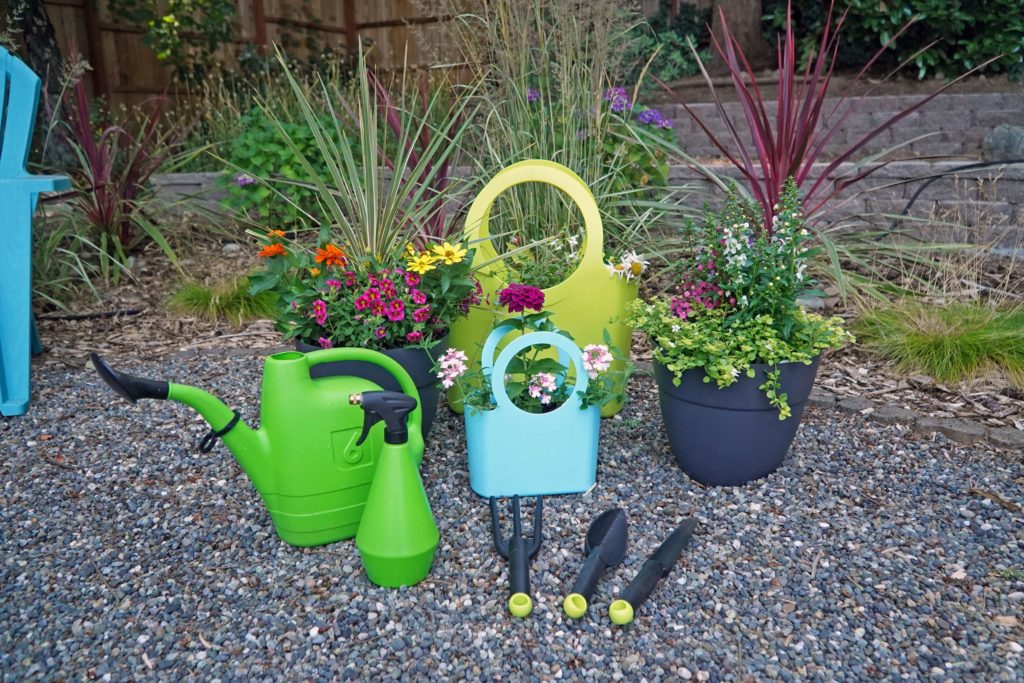
Handy Gabrielle bags in Lime and Aqua
3) Check for Pests
Pests often show up overnight and can wreak havoc on plants and flowers before you have even detected their presence. If plants are showing stress for any reason, such as too much or too little water, intense heat or temperatures, damage to stems or leaves, or other unfavorable growing conditions, pests will take advantage of the situation and build a new home. That is why good container gardening care involves inspecting plants and flowers for pests.
In general, a weekly inspection is a good general schedule to follow. Pick one day of the week and make that your “pest day.” Unfortunately, this inspection might need to increase in frequency to daily depending on if you find any pests or not. Look at your plant’s new leaves, stems, and even flowers for insects. In the photo, notice how this plant is getting sprayed for aphids using the Energy Pro Sprayer which has a 360° spraying capability to get underneath tough areas like this zinnia leaf in the Regular size Gabrielle bag.
Inspect newer leaves on the undersides and watch for curled or rolled leaves, as this can be a good indication of insect pests starting to homestead on your plant. Have a good spray solution ready, such as neem oil or soap and water, for many of the common pests in case you need it.
The new stems and flowers of your plants can also be places where insects, like aphids, mealy bugs, and other pests, will feed on your plants. Diseases like molds and bacteria can be identified by looking for moldy or slime surfaces that can spread around a plant and to other plants, if not controlled and removed. If you need to apply any products to control pests on your plants, be sure to read and follow the label of that product and wear all appropriate safety gear.
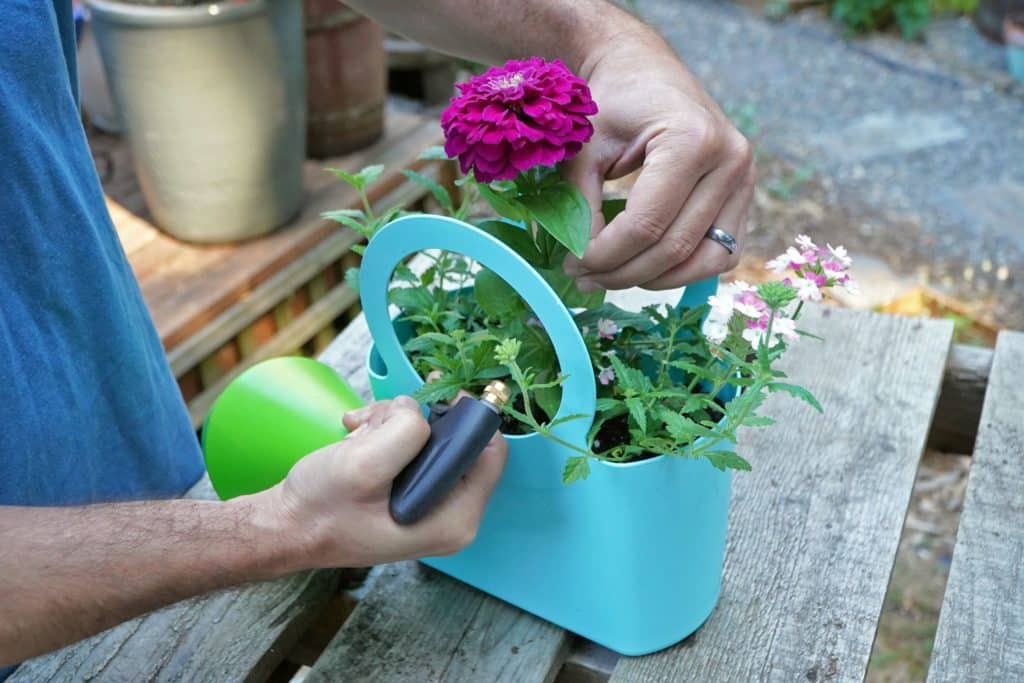
Energy Pro Sprayer is perfect to get under those hard-to-reach spots
4) Add Nutrients
Container plants need regular nutrition to continue growing and flowering throughout the summer. Being a finite space with limited resources means that we have to provide that nutrition and an easy way to do this is by applying a liquid fertilizer when you water your plants. This task can be performed each week with a water-soluble, well-balanced fertilizer mixed into your Energy X-Large Watering Can (pictured is the Green 3 color) to give your container plants an equal amount of the nutrients they need.
You can also apply a granular fertilizer that will feed your plants every time you water them, referred to as a time release fertilizer which can last anywhere from 2 months up to 1 year, depending on which fertilizer you use. Whether you choose liquid or granular, make sure it is listed as a well-balanced fertilizer like a triple 8 (8-8-8) or 4-6-5.
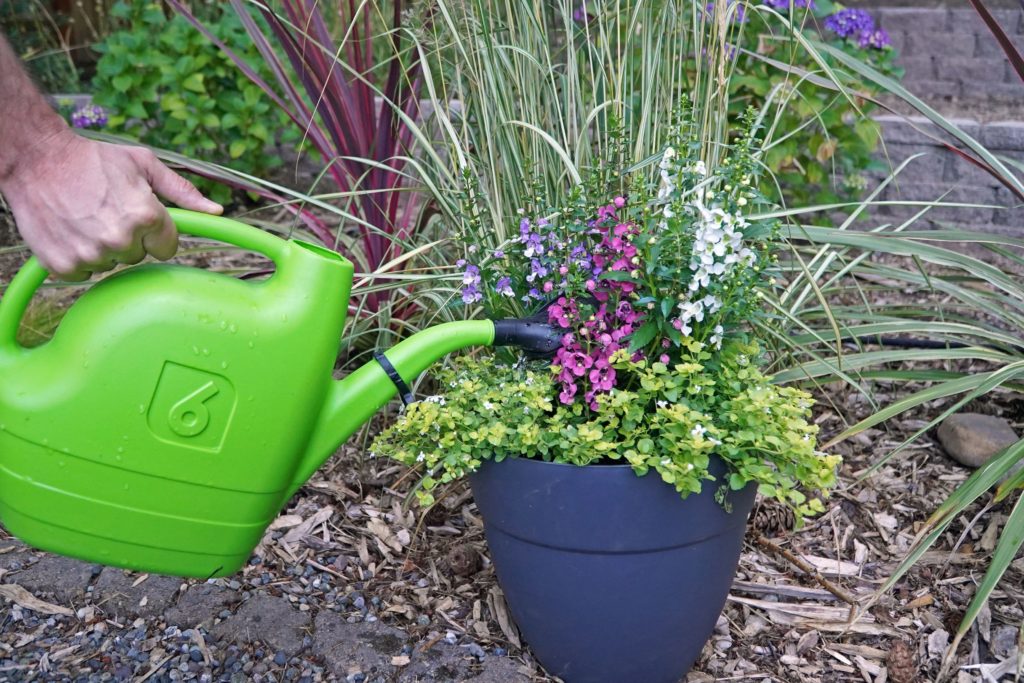
An ideal watering, the Energy X Large Can that holds up to 1.6 gal of water
5) Remove Weeds
Just because you filled your container garden with new potting soil for your beautiful summer flowering plants does not mean you will automatically be weed-free. Weeds can (and will) grow in your containers. They could show up due to birds, squirrels, the wind, and even us, accidentally. Also, occasionally even the soil used for your containers could contain various weeds you were not expecting.
The good news is that you can weed or monitor for weeds in your containers on a weekly basis and control them fairly easily. Make sure to pull each weed out and get the roots, too, using a Weed Extractor like the one pictured. Some weeds can still spread and grow if any of their plant parts are left in the soil, so do your best to get everything out, roots and all. Also, make sure not to disturb your flowering plant’s roots too much when removing weeds from around them.
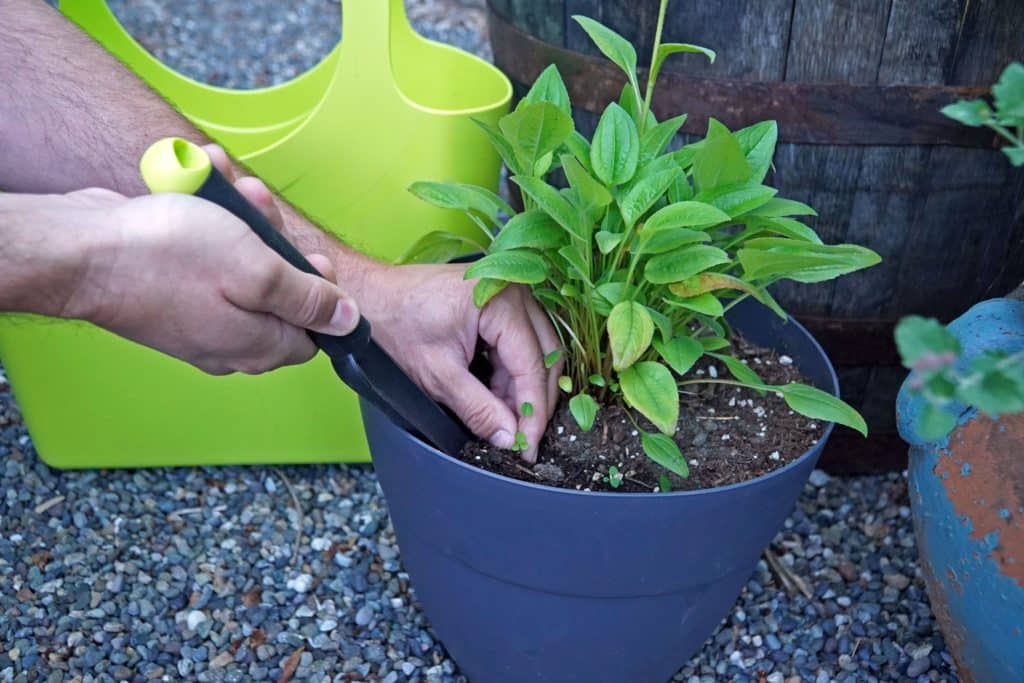
Using a Weed Extractor for easily removing the weeds from its roots
Conclusion
The five garden care tasks above can help your summer flowering containers look healthy and beautiful all season long and even into the fall. Make sure to take time each week to inspect your containers for overcrowded plants you may need to prune, pests you may need to spray or remove, weeds you need to pull, and/or dead flowers you need to remove. And be sure to keep your containers on a regular fertilizing schedule so they get all the nutrients they need. By using the correct tools and supplies for each garden care task, your containers will continue to live their best lives throughout the summer months ahead.
Happy Gardening!
